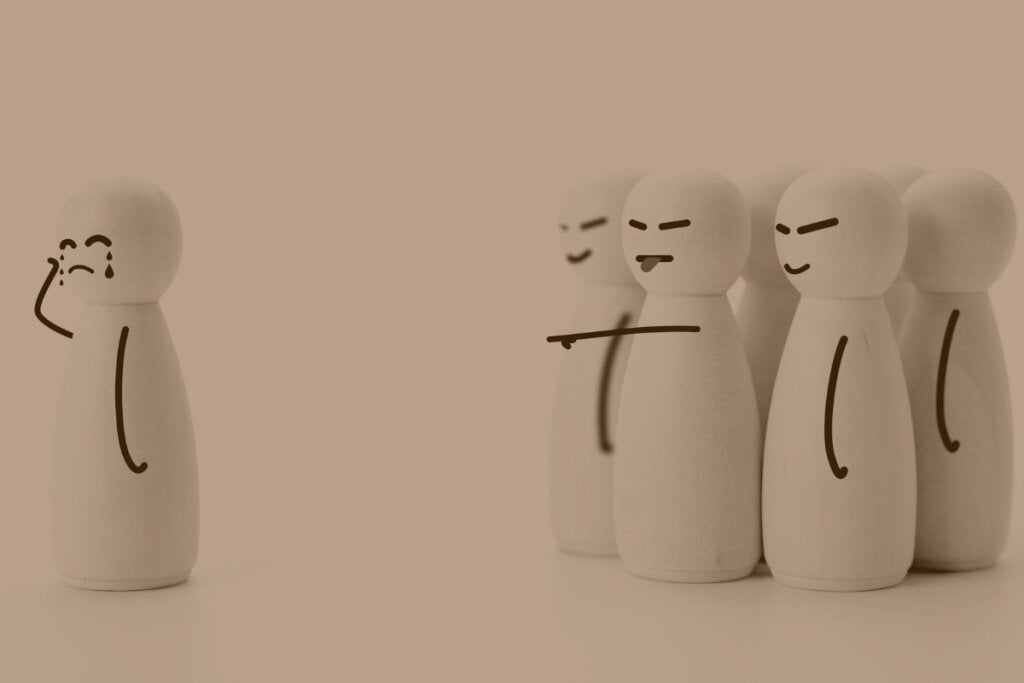Globalization and digital media have made ritual defamation a widespread practice. One such example is the dismissal, by Google, of the engineer, James Damore. He was accused of violating the company’s code of conduct.
Damore published a document called “Google’s Ideological Echo Chamber”. In this memo, he criticized pro-diversity measures. According to him, they represented an ideological bias that negatively altered Google’s performance.
Regardless of the opinion we may have of Damore, who later suffered harassment, his case supports the idea of how collective thinking prevails and represses the subjective. In effect, whatever is politically correct and the opinion of the majority and dominant group prevails. Therefore, they intimidate anyone who dares to criticize their normative system of values and beliefs.
The American researcher, Laird Maurice Wilcox, claims that ritual defamation seeks to destroy, at all costs, with devious rhetoric, manipulation, and unjustified and pretentious publications, the reputation or status of an individual. The objective is to distort their positions or opinions, silence their speech, and prevent others or public opinion from analyzing them prudently and objectively.
Ritual defamation
The Cambridge Dictionary defines defamation as “the action of damaging the reputation of someone or a group by saying or writing bad things about them that aren’t true”.
In more extensive terms, defamation encompasses the intention to damage the public image of an individual via prejudiced accusations which directly attack their dignity and honor. It’s possible to defame a person for a specific demonstrable fact. However, problems arise when defamation is carried out with lies.
Virtual defamation differs from defamation. That’s because it’s a deliberate, public, organized, and aggressive expression against an individual, entity, company, or group. The aim is to undermine their good name. Moreover, to nullify any possible influence they might have on certain sectors of society.
The purpose of defamation is to abolish anyone who gives their opinions on taboo topics, those which society prefers not to consider. Consequently, they’re seen as dissidents and aggressors of social canons.
Characteristics of ritual defamation
This form of smear serves as a warning to those who dare to speak openly about a taboo subject. Eventually, they’re abandoned and sullied by society, with no chance of redemption.
We must clarify that this kind of defamation has nothing to do with religion, esotericism, or mysticism. It’s ritualistic because it follows programmed and predictable patterns, based on the following points:
Violating taboos
The marked or indicated individual must speak directly or indirectly about the taboo subject, or identify with it, even if it’s to a lesser degree. This gives other people the opportunity to make them a victim of defamation and the object of social rejection.
The character of the victim is under fire
At this point, the aim is to assassinate the victim’s personality. The defamers attack their opinions or systems of beliefs and values, on a superficial level, to denigrate their character as much as possible.
No right to debate
For defamation of this kind to keep its victim in check, the defaming individual or group must prevent them from expressing their opinion or clarifying their position in a debate. In effect, they repress or censor their speech. Their aim is to condemn it and divert attention from any evidence that supports it that could free the victim from the pressure they’re exerting.
Public victims
The easiest targets of defamation are public figures. This is due to their exposure to a broad sector of society and public opinion.
Other people
It’s usually really effective to incite/encourage other people to share the same social role so that they also defame the victim. For example, someone who wishes to apply ritual defamation to a politician might invite others, especially their political opponents, to join in.
Dehumanization of the victim
In order to dehumanize the victim, the defamers must make others believe that they’re identified by their opinions or systems of beliefs and values and their attitudes, and not as an individual, in the real sense of the word. For example, if the victim considers themselves to be a revolutionary, they’ll be identified by the worst negative representations of violent and bloody revolutions in history.
The environment of the victim
Defamers also put pressure on the victim by harassing, humiliating, and ridiculing their loved ones. For instance, a teacher might be fired from their educational institution. Moreover, pressure will be put on any other organizations they work for to fire them.
Eliminating the victim’s chance of defending themselves
Any explanation given by the victim to defend their good name will be seen as insignificant. In fact, any explanations they make will be rejected. They’ll be seen as aggravating and threatening arguments.

Punishing the victim
Ritual defamation punishes the victim and attacks their good name. It intimidates and terrorizes, via unconscious collective fear, the spreading of disinformation. It also gives credence to malicious signs, symbols, and speeches.
These smear campaigns are fueled by the emotional impulses, irrational thoughts, and prejudices of the victim. The slanderers disguise the falsehoods as irrefutable truths. However, if they exaggerate, they may inadvertently reveal their bad intentions toward the victim. This will make them fail in their purpose.
In light of the above, we must be prudent when analyzing situations. We must also stay calm and not give any opinions that aren’t supported by solid arguments. This is even more important when someone’s reputation is at stake. Indeed, we must ensure we shield our personal criteria against any kind of prejudice and false information.
The post Ritual Defamation appeared first on Exploring your mind.



















Comments